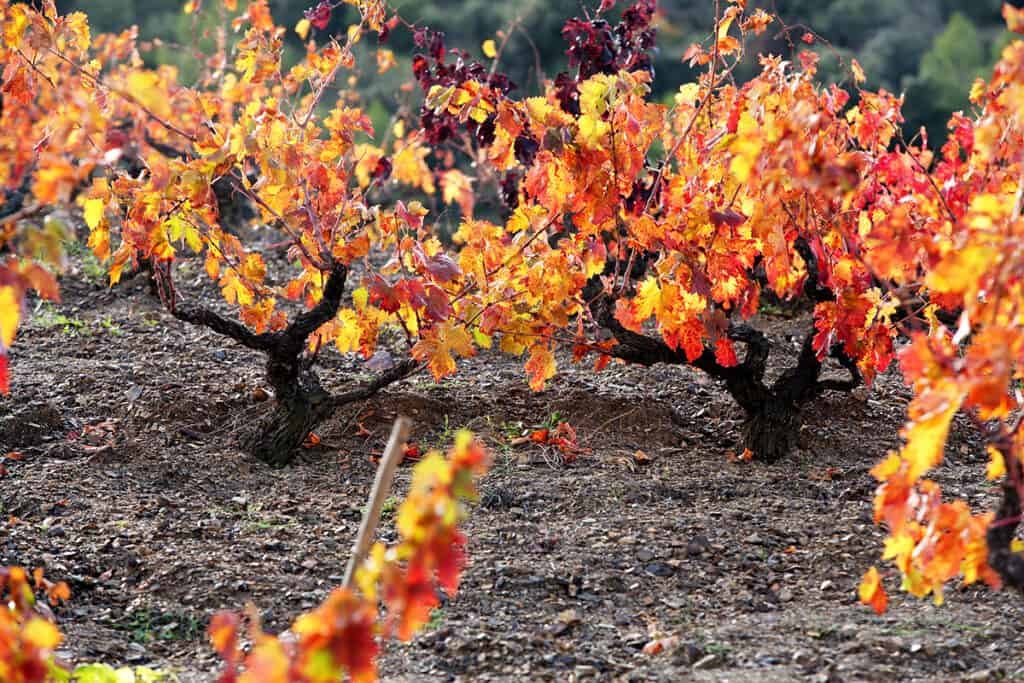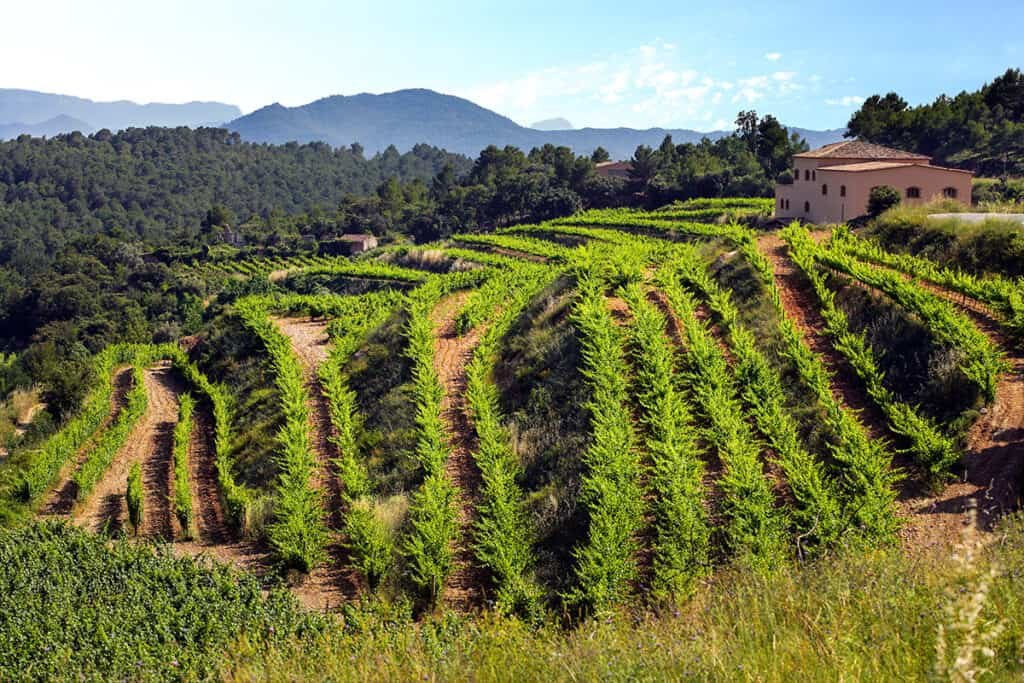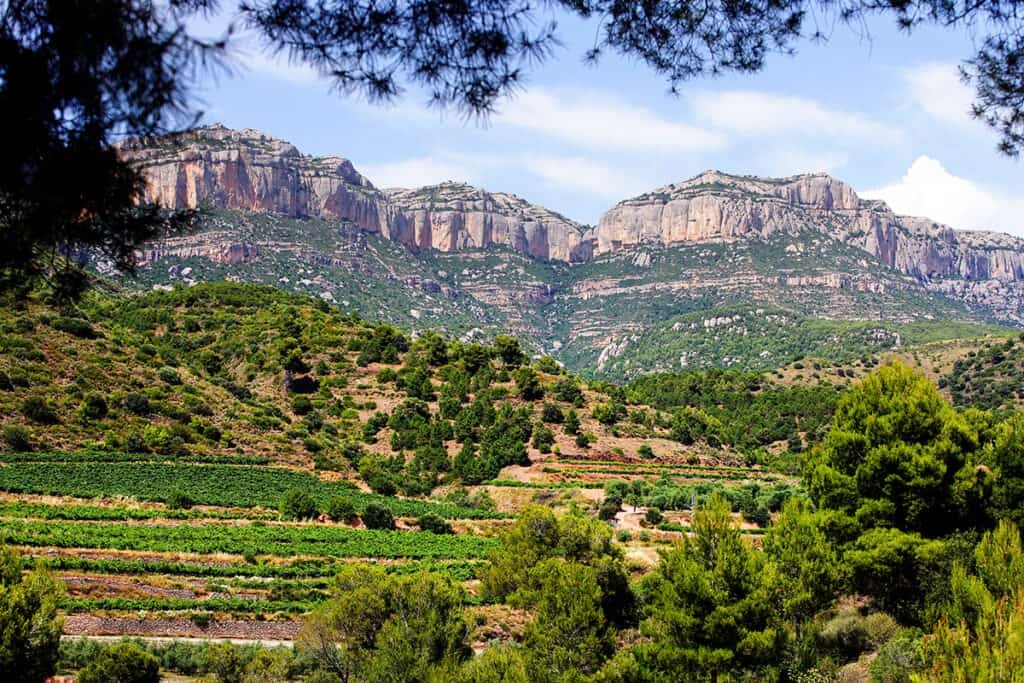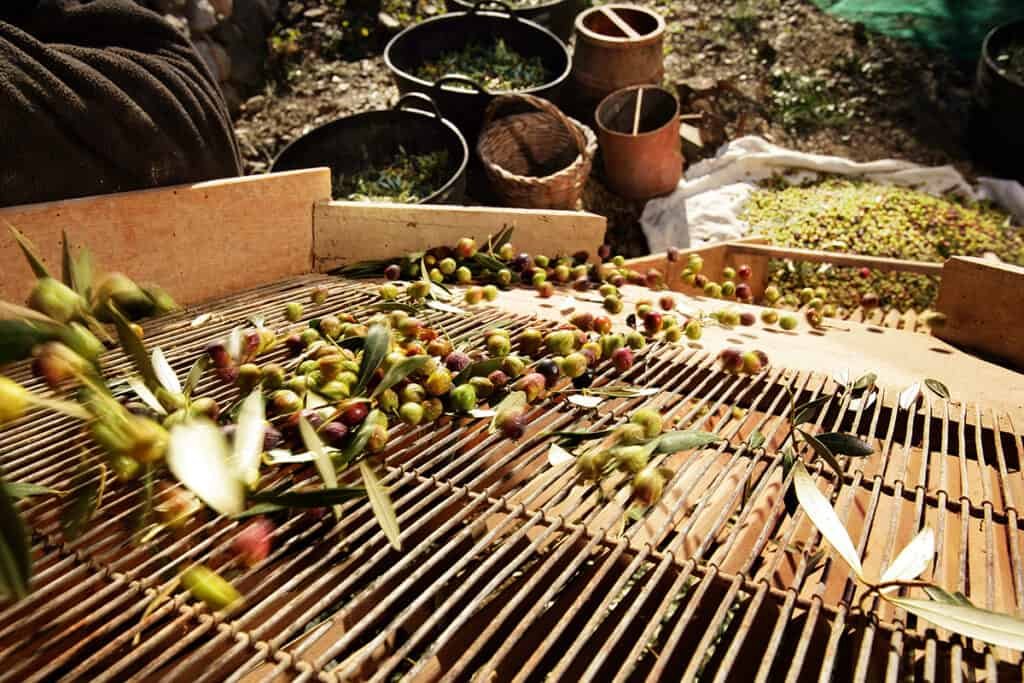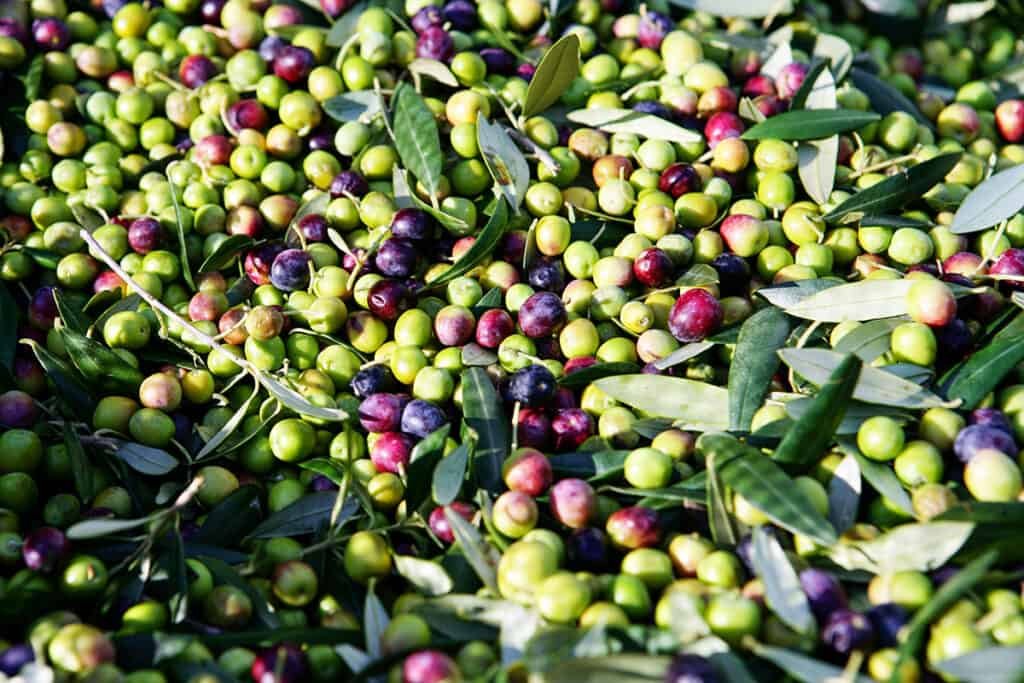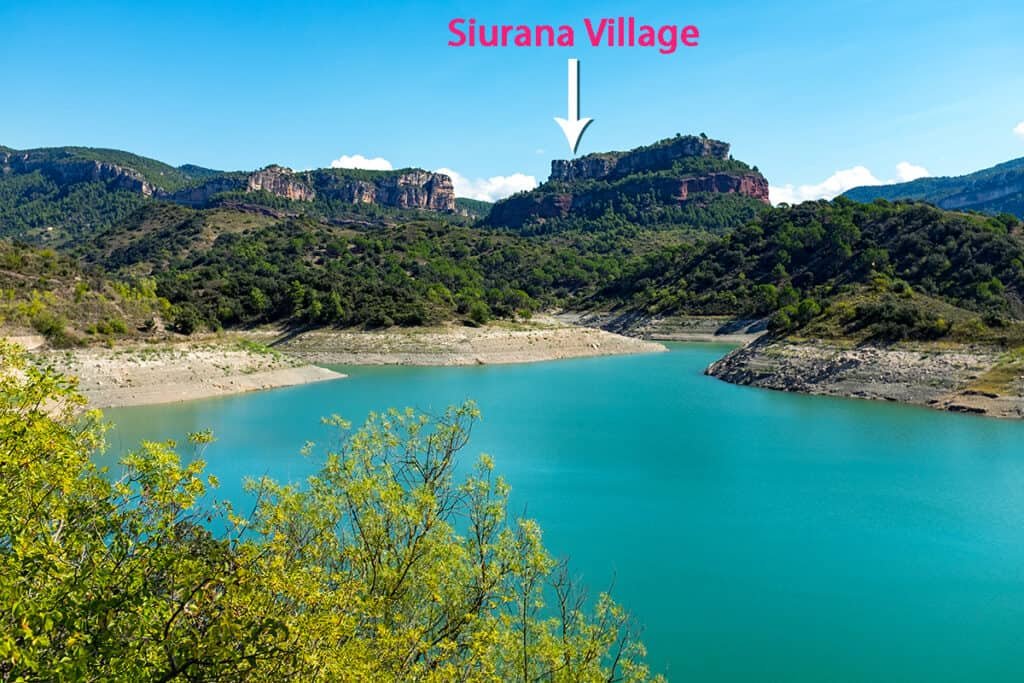Planning a wine tour breakaway to Spain could be a tough choice to make. What wine region should I visit? Which region produces the best-quality wines?

There’s no magical equation to answer these two questions. Every wine-producing region in Spain is unique in terroir, climate, soil, and many more factors that influence wine’s aromas and quality.
My Ideal tour, of course, would be a 3-week road trip to visit more than one of the 96 Protected Designations of Origen Spanish wine regions.
Among all these, only 2 regions were awarded the highest category in Spanish wine regulations called DOCa. (designation of qualified origin)
The famous Autonomous Region in Northern Spain is called “The Rioja” and the “Priorat” Wine region in Catalunya. These regions have above-average grape prices and strict quality controls.
Every wine lover visiting Barcelona should not miss the opportunity to visit the Priorat wine Region which lays only 130km south of the Catalan Capital.






A Brief Overview
Priorat designation of qualified origin has a special singularity due to its relatively small territory.
This 498,6 square meter region with 24 small towns that used to be one of Catalonia’s most depressed regions, today produces one of Spain’s most expensive wines. The extraordinary L’Ermita red wine from enologist Álvaro Palacios. Quality wines have acted in good faith to a socio-economical transformation and have turned into the Tourism starter.
The combination of its orography, delimited between steep mountain ranges, its own micro-climate with dry winds called the “I will be”, and its peculiar geological conformation, create singular values:
Slate soils on the steep slopes known as licorella (“licorice,” due to its dark color) are the main feature of the terroir soil and the success of its native grapes.
The extreme changes between day and night time temperature fluctuations combined with the complex topography yield a very low grape harvest. In most cases under 1kg of fruit per plant is average.
These factors assure a remarkable personality to the red wines. Many vineyards are located on costers (Catalan for “steep slope”) with a typical gradient between 15%-60%.
Sometimes even too steep for mechanical harvesting.
The combination of these factors and the total dedication of its population professionally engaged in wine cultivation guarantees the extraordinary final product, the highest expression of mineralized broths which has become internationally acknowledged.
What to expect from Priorat Wines
Priorat mainly produces red wines made with Garnacha (Grenache) and Cariñena (Carignan), and to a lesser extent, Cabernet Sauvignon, Merlot, and Syrah.
Intensive meaty red wines with a complex bouquet, though elegant and original at the same time. The region’s lack of organic soils transmits a characteristic minerality to the wines.
White wines are made with Garnacha Blanca (Grenache Blanc), the most popular grape in the area, and Macabeo (Macebo) with a mild flavor, ideal for blending. Sweet wines are made from Pedro Ximénez, a natural sweet grape high in alcohol, similar to sherry.
But enough technical descriptions and facts.. the best way is to “pop and pour” some of these wines yourself to discover their unique aromas and taste.



Ready to discover the region?
Looking carefully at this map you’ll realize that another famous Catalan ring-shaped wine region called “DO Montsant” virtually surrounds the Priorat. The main differences between these two regions are the soil and the annual rainfall.
The Montsant region has more chalk (calcareous) and clay soils than the slate soils of the Priorat. The slightly higher rainfall and better performance of the grapevines create a more fruity bouquet and freshness.
The wine produced in the DO Montsant is also highly appreciated.
The best way to uncover the Priorat is by vehicle. It’s the only Catalan region without a single traffic light, due to its rural character.
Driving through the endless network of winding paths between the vineyards along the steep slopes is of outstanding beauty.
Discover ancient sites like Cartoixa d’Escaladei, charming little stone villages, olive oil trails, The Montsant Nature Park, chapels, museums, and of course more than 100 wineries to choose from for wine tastings and tours.

My favorite 3 day / 2-night visit
Arriving at Falset, The capital of the region, visit one (or both) of these Wineshops, Aquiló Vinateria and Vins i Oli’s del Priorat.
A good way to initialize your trip tasting some of the best wines the region has to offer.
If you visit the region in May you’re in luck to enjoy the “Annual wine fair” in Falset with over 50 Wineries of both DO Montsant and DOA Priorat participating.
Dining in Falset at any of these Restaurants like “El Celler de L’Àspic, El Cairat, Mas Trucafort , Hostal Sport or Lotus Priorat is a safe choice. After trying every single one ( in different trips) I could recommend them all, especially with their endless wine menus for an excellent pairing.
Before leaving the town don’t miss the majestic “Wine Cathedral” with its extraordinary architecture. One of Gaudi’s disciples, the architect Cèsar Martinell designed the building still in wine production today.
An alternative dining option about 10km from Falset, could be the Restaurant “La cooperativa”. They offer a delicious organic menu with their own wine shop and are located in the picturesque town of Porrera.
Gratallops
Gratallops and the surrounding area is one of Priorat’s best-rated hotspots which host some of the most acknowledged Spanish wineries.
My favorite accommodation choice is the “Celler & Hotel Trossos del Priorat” just outside Gratallops. This small charismatic Hotel is blended into the winery. Every room has a minimalistic decoration with a small terrace overlooking the breathtaking view of their vineyards.
At night you’re welcome to use the barbecue facilities on the terrace, and to chill enjoying your wine tasting with their entire wine collection at your disposal. ( wine by the glass ). The breakfast served, with only local products is exceptional.
After a relaxed breakfast we have a few activity options to choose from:
1. A Hiking expedition
2. A cultural visit.
3. Wine tasting
4. Oil tasting.
5. Visit charming villages.





Cartoixa de d’Escaladei & Olive oil tasting
On our way to the Carthusian Monastery, about 12km away, we’ll visit Priorat’s own “Manhattan”, La Vilella Baixa.
From the river up to seven-story houses can be seen, but seen from the street’s side it looks like only two or three-story houses.
That is how the town gained its nickname and strangely enough, it’s the region’s second smallest town.
Take note of the local butchery, “Cal Centro” as we’ll stop by on our way back from the Monastery to the Hotel. They have excellent quality meat and cheese which will be part of our BBQ supper menu.
The next town called ” La Vilella Alta” is indeed the smallest town in the Priorat region with approx 100 inhabitants, and a “must” stop for two reasons.
The unique church was renovated only among the local people with donations and exchanging services.
The other main reason is to visit the small unique winery called “La Cartoixa de Montsalvat”. We met with the owner and enologist Francesc Sanchez Bas for an afternoon tour and visit.
Today the Carthusian Monastery of Escaladei is a ruin and one of the most important historical sites to visit in the region. French monks from Provence who founded the Monastery in 1194 at the foothills of the Montsant mountain range, planted the first vineyards of the region.
“Thanks to these monks the Priorat is now famous for its wines”
The small village of Scaladei has several restaurants, a wine shop, and a specialized Olive Oil boutique. Visiting the “ScalaDei” winery is a good option to consider.
A few years ago we visited the Olive oil shop and met the friendly outgoing owner called Neus. That day we discovered one of the best ecological Olive oils from the Suirana Designation of Origen.
Neus and her family run a small business born of the tradition of several generations, dedicated to the cultivation of olive oil. They obtain 100% natural Extra virgin olive oil from three different olives. The Negret, Rojal, and Arbequina olives, each with diverse tastes and aromas.
The famous “Cavaloca” blend has several international awards.
Small tours and oil tastings are organized to discover the origin of their ancient olive trees and the production process at the oil mill.
Wine tasting at “La cartoixa de Montsalvat”
Wine tastings can be done at many of the wineries that offer tours and tastings. Download this PDF for more info and locations.
A few of my favorite wineries are Planetes De Nin Celler_ Familia NinOrtiz, Álvaro Palacios _Finca Dofi , Ferrer Bobet_ Seleccio Especial Vinyes Velles or Nelín from Celler Clos Mogador.
The wines from the Cartoixa de Montsalvat winery are carefully handcrafted using traditional methods without chemicals. The six plots with old grapevines are scattered on the steep slate slopes at different altitudes. The annual wine production is less than 20 000 bottles.
The wine tasting is done in a characteristic stone chamber next to the oak barrel warehouse. No artificial lights are used during the aging process as they may “disturb” the resting broths.
Francesc produces 4 extraordinary red wines and unique white wines with a complex mineral bouquet. In 2008 his Montgarnatx red wine was part of the wine selection at the “White House correspondents dinner”.
Back at the hotel, we enjoyed a sundowner on the terrace with some red wines from the winery “Trossos del Priorat”. At dusk, we had the fire ready for our barbecue.
Hiking Trail to the medieval town of Siurana
Many hiking trails and walks can be done in and around the Serra de Montsant Nature Park.
One of the most spectacular trails is the “Memories of Princesses and Warriors”.
The medieval town of Siurana located 730 meters high was the last Moorish stronghold in what is known today as Catalonia. The ruins of the 9th-century caste are still visible.
According to the Legend the beautiful daughter of the last Wali ( Moorish Governor), Apdelazia committed suicide moments before defeat. She galloped with her white stallion towards the edge of the cliff and both horse and mistress disappeared into the abyss finding their deaths.
The Hiking trail starts from the Siurana dam, also famous for kayaking. The Siurana river has some small waterfalls with appetizing natural pools. Swimming in these crystal clear waters is relaxing.
The small stone village of Siurana has some restaurants and the Romanesque Church of Santa Maria to visit. The best place to have a beer is at the “Refugi Ciríac Bonet Restaurant” with a unique 180º terrace on a cliff.
The narrow ledge from the famous “Moorish Queen suicide cliff” at the castle ruins is not suitable for those afraid of heights but the fabulous aerial views along the narrow path are worthwhile.
These vertical cliffs are a popular climbing spot for the brave-hearted.
Siurana can also be visited by car following the T2335 from Cornudella de Montsant.
Final Thoughts
The Priorat DOa region is not only a wine lovers paradise. This small region has a lot to offer other than vineyards and winding roads. The natural beauty, historical sites, and charming villages create a distinctive visitor experience. The perfect hideaway to escape from the buzzing cities and everyday stress.
Camera Gear Used in this post
Canon 5D Mark IV, Canon 7d mark II, Fuji x100V and Samsung Smartphone. Some good quality lenses like Canon EF 70-200mm f/2.8L IS III USM, Canon EF 50 mm f/1.8 STMandthe Canon EF 16-35 mm f/2,8L III USM.
For more insights and travel tips read my posts on “The best route to visit Magical Rajasthan” and “Ultimate 2 weeks in South Africa”
Booking.com


